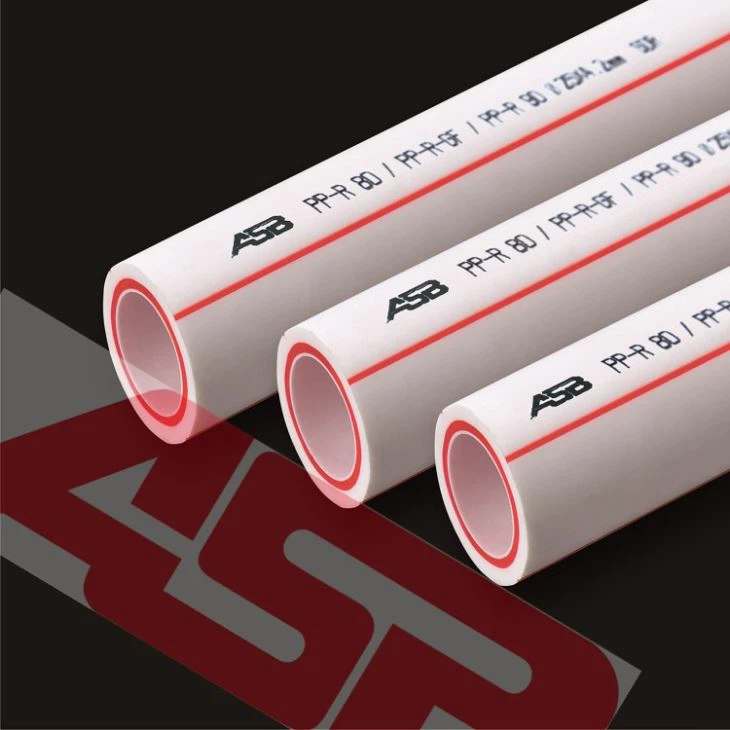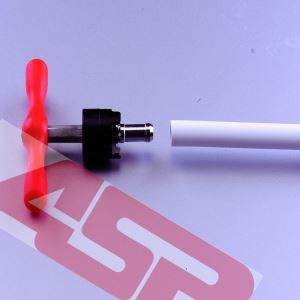Determining the flow rate of PPR composite pipes is a crucial aspect in various plumbing and fluid - handling applications. As a PPR Composite Pipes supplier, I understand the significance of providing accurate information on this topic to our customers. In this blog, I will delve into the factors that influence the flow rate of PPR composite pipes and the methods to calculate it.
Factors Affecting the Flow Rate of PPR Composite Pipes
Pipe Diameter
The diameter of the PPR composite pipe is one of the most significant factors affecting the flow rate. A larger diameter pipe allows more fluid to pass through per unit of time. According to the principles of fluid mechanics, the cross - sectional area of the pipe is directly related to the flow capacity. The formula for the cross - sectional area of a circular pipe is (A=\pi r^{2}), where (r) is the radius of the pipe. For example, a Cold Water PPR Pipe with a larger diameter will have a greater cross - sectional area and can accommodate a higher flow rate compared to a smaller - diameter pipe.
Pipe Length
The length of the pipe also plays an important role. Longer pipes create more friction for the fluid flowing through them. As the fluid moves along the pipe, it experiences resistance from the inner surface of the pipe. This frictional resistance reduces the flow rate. For instance, in a large - scale plumbing system where the PPR - FB - PPR Pipe is used over a long distance, the flow rate at the end of the pipe will be lower than at the beginning, assuming no additional pressure is applied.
Fluid Viscosity
The viscosity of the fluid being transported affects the flow rate. Viscosity is a measure of a fluid's resistance to flow. Fluids with high viscosity, such as thick oils, flow more slowly through pipes compared to low - viscosity fluids like water. When dealing with different types of fluids in PPR composite pipes, it is essential to consider the viscosity factor. For example, if a PPR Fiberglass Composite Pipe is used to transport a viscous liquid, the flow rate will be significantly lower than when transporting water under the same conditions.
Pressure Difference
The pressure difference between the two ends of the pipe is a driving force for fluid flow. A greater pressure difference will result in a higher flow rate. In a plumbing system, pumps can be used to create a pressure difference to increase the flow of water through PPR composite pipes. If the pressure at the inlet of the pipe is much higher than at the outlet, the fluid will flow more quickly through the pipe.
Methods to Determine the Flow Rate
Empirical Formulas
There are several empirical formulas available to estimate the flow rate of pipes. One of the most commonly used is the Hazen - Williams formula. The Hazen - Williams formula for flow rate (Q) is given by:


(Q = 0.2785C\times d^{2.63}\times\left(\frac{\Delta P}{L}\right)^{0.54})
where (Q) is the flow rate in cubic meters per second, (C) is the Hazen - Williams coefficient (which depends on the pipe material and the condition of the pipe's inner surface. For PPR composite pipes, (C) is typically around 150 - 160), (d) is the internal diameter of the pipe in meters, (\Delta P) is the pressure difference between the two ends of the pipe in pascals, and (L) is the length of the pipe in meters.
Computational Fluid Dynamics (CFD)
Computational Fluid Dynamics is a more advanced method for determining the flow rate. CFD uses numerical algorithms to solve the equations of fluid flow. By creating a virtual model of the PPR composite pipe and the fluid flowing through it, CFD can provide detailed information about the flow behavior, including the flow rate at different points in the pipe. This method is particularly useful for complex pipe systems or when dealing with non - Newtonian fluids. However, it requires specialized software and expertise to perform.
Flow Meters
Flow meters are practical devices for directly measuring the flow rate of fluid in a pipe. There are different types of flow meters, such as turbine flow meters, ultrasonic flow meters, and electromagnetic flow meters. Turbine flow meters work by measuring the rotation speed of a turbine placed in the pipe, which is proportional to the flow rate. Ultrasonic flow meters use ultrasonic waves to measure the velocity of the fluid, and then calculate the flow rate based on the cross - sectional area of the pipe. Electromagnetic flow meters are suitable for conductive fluids and measure the flow rate based on Faraday's law of electromagnetic induction.
Importance of Accurate Flow Rate Determination
Accurately determining the flow rate of PPR composite pipes is essential for several reasons. In a plumbing system, if the flow rate is too low, it may not be sufficient to meet the water demand of the users. For example, in a residential building, low water flow can lead to poor performance of showers, faucets, and other water - using appliances. On the other hand, if the flow rate is too high, it can cause excessive pressure in the pipes, leading to leaks, pipe bursts, and increased energy consumption.
In industrial applications, accurate flow rate determination is crucial for process control. For instance, in a chemical plant, the correct flow rate of chemicals through PPR composite pipes is necessary to ensure the proper reaction and production quality.
Conclusion
Determining the flow rate of PPR composite pipes involves considering multiple factors such as pipe diameter, length, fluid viscosity, and pressure difference. There are various methods available, from empirical formulas to advanced CFD simulations and practical flow meters. As a PPR Composite Pipes supplier, we are committed to providing high - quality pipes and helping our customers accurately determine the flow rate for their specific applications.
If you are interested in purchasing our PPR composite pipes or need more information on flow rate determination, please feel free to contact us for procurement and negotiation. We look forward to serving you and meeting your plumbing and fluid - handling needs.
References
- Crane Co., "Flow of Fluids Through Valves, Fittings, and Pipe", Technical Paper No. 410.
- Streeter, V. L., and Wylie, E. B., "Fluid Mechanics", McGraw - Hill.
- White, F. M., "Fluid Mechanics", McGraw - Hill.






